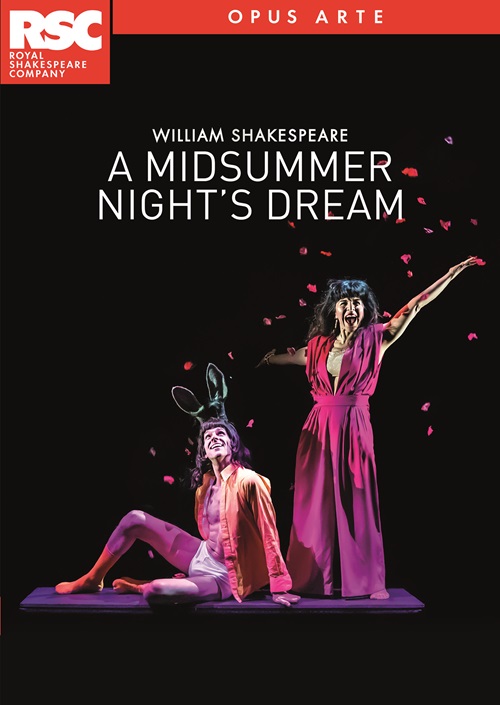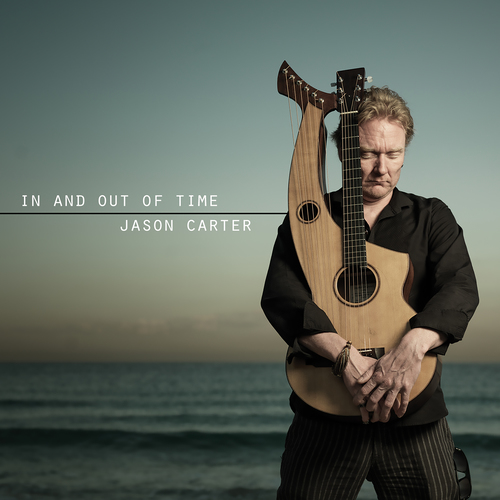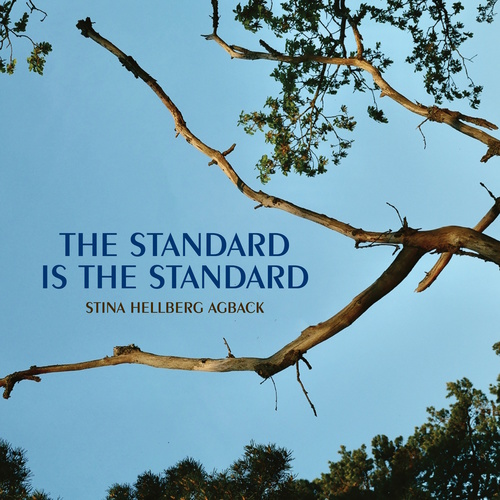In addition to its own wide-reaching monthly new releases (see www.naxos.com/newreleases.asp), Naxos also distributes several leading labels in many countries around the world. Here is a choice selection of recent releases from some of these distributed labels.
From the label’s very beginning, OehmsClassics has pursued a philosophy of both giving young artists the opportunity to make their recording debut and supporting them in longer-term recording projects.
Renowned institutions, opera houses, orchestras, conductors, and soloists have quickly expanded the catalogue, which, in addition to the standard repertoire, also includes exciting discoveries, rarities, and work cycles by great composers. Numerous recordings have been honoured with international awards (ECHO Klassik, Opus Klassik, Preis der Deutschen Schallplattenkritik, and the International Classical Music Award).
The internationally known artists who have recorded for OehmsClassics include the Essen Philharmonic Orchestra, Arcis Vocalists, Hansjörg Albrecht, Simone Young, Dmitri Kitaenko, the Berlin Opera Group, Sophie-Mayuko Vetter, Stanislaw Skorwaczewski, Singer Pur, and many others.
The exciting Bruckner Project – a monumental 10-volume edition featuring all of Anton Bruckner’s symphonies transcribed for organ – is now complete! Watch the trailers now on YouTube.
This series, marking the 200th anniversary of Anton Bruckner’s birth, is dedicated to his symphonic works. Hansjörg Albrecht performs all of Bruckner’s symphonies in numerous new organ transcriptions at important locations, including Zurich, Leipzig, Linz, Vienna, and London. Bruckner’s works are framed by contemporary compositions reflecting Bruckner’s output in the ‘Bruckner Windows’.
Hansjörg Albrecht concludes this extensive Bruckner commemoration project with the final recording, that of the Study Symphony.
Pre-Order – Available in March 2025
In her new album, Maria Lettberg takes listeners on a musical journey through the countries of the European Union. She has curated a selection of piano works, one from each country, regardless of period or style. The collection represents all the major styles of classical music, ranging from the Renaissance, Baroque, and Viennese classical periods to Romanticism, Late Romanticism, Impressionism, 20th-century music, minimalism, and neoclassicism. Each piece from the 27 countries boasts its own fascinating characteristics, and together they paint a multi-layered picture of the European Union.
This recording of Dvořák’s Seventh Symphony documents a concert given in March 1981 in the Herkulessaal of the Munich Residenz with Bernard Haitink conducting the Bavarian Radio Symphony Orchestra. The Scherzo capriccioso is a studio recording, also from March 1981.
Following the success of Antonín Dvořák’s first visit to London in 1884, the London Philharmonic Society asked him to return the following year and to compose a new symphony for the occasion. It was an honourable request – after all, the Society had commissioned Beethoven’s Ninth Symphony six decades earlier! The world premiere of the Seventh Symphony took place on 22 April 1885 in London, with the composer conducting. It became one of Dvořák’s greatest successes.
Dvořák’s Scherzo capriccioso of 1883 is certainly more than just a filler on this album. Its dramatic and passionate character – contrary to what its playful title suggests – is probably due to the fact that it was written during a crisis in the composer’s life. The piece is a testament to impressive craftsmanship, developed both formally and thematically with great musical ingenuity and dance-like verve.
Remembered by ambitious amateur pianists for his Rustle of Spring, Christian Sinding was a more important figure in the music of his native Norway than this might suggest; there, in his time, he was second only to Grieg. Trained in Leipzig, he fell under the influence of Liszt and Wagner, producing a large quantity of music that, although it enjoyed contemporary popularity, remains forgotten in today’s concert programmes. In revealing the inherent fervour of his four symphonies, this album enjoys sensitive and enthusiastic interpretations from the Norrköping Symphony Orchestra under Karl Heinz Steffens, for whom Sinding has become a composer close to his heart.
Ian Niederhoffer, a Musical America New Artist and BBC Rising Star, is a fast-rising young conductor. Here, together with his orchestra Parlando, he explores music as a tool of cultural resilience in the face of censorship, particularly within the Soviet Union. This eclectic program includes Shostakovich’s Adagio from Lady Macbeth of Mtsensk, a work infamously censored after Stalin’s disapproval, the Concertino for Violin and String Orchestra by Mieczysław Weinberg, a composer whose career was shaped by persecution during Stalin’s anti-cosmopolitan campaign, and Edvard Mirzoyan’s Symphony for String Orchestra and Timpani, a powerful testament to Armenian cultural survival despite Soviet Russification. Inspired by Parlando’s mission that ‘every concert tells a story,’ the album concludes with three narrated tracks detailing Soviet censorship.
Idil Biret was introduced to the music of Bach very early in her life. At the age of three, she tried to play by ear the preludes of Bach’s Well-Tempered Clavier, which her mother had played on their upright piano, while drawing pictures in her notebook. In her memoirs, Idil’s mother, Leman Biret, writes: ‘After listening for a while to orchestral music on the radio, ldil would detect the main melody and then play it on the piano with one finger. Afterwards, when she reached the age of four, she would play them on the piano with both hands and the correct harmony. Bach preludes and fugues from the Well-Tempered Clavier, for example, which even the talented musicians took considerable time to study and memorise, were mastered by Idil in only a few days after listening once or twice, after which she would play them without a single wrong note.’
Then, at the age of four, her teacher, Mithat Fenmen, played for her on a 78-rpm record by Edwin Fischer, the Prelude and Fugue in F Minor from the Well-Tempered Clavier, Book II. She says that Bach’s music has been a part of her life ever since that day. In 1946, at the age of five, she played Bach’s D Minor Piano Concerto with a string quartet at the Ankara Radio, a work that would become a staple of her concert programs from then on.
A native of Ukraine, Alexey Shor now lives and works in New York. His music has received prestigious performances and recordings in collaboration with leading international musicians. Joining a long tradition of music inspired by literary sources, From My Bookshelf is a series of musical character portraits that range from the tortured soul of Quasimodo to the dashing D’Artagnan, with plenty of fantasy and romance in between. The engaging and virtuoso Flute Concerto No. 1 combines traditional Classical forms with unexpected harmonic language and intricate rhythmic vitality.
The Miraculous Mandarin, Op. 19, Sz 73, is Bartók’s final work for the stage. The plot revolves around prostitution, brutality, robbery, murder, being an outsider, (unrequited) love, and finally, by way of catharsis, a kind of love-death. The music is relentlessly abrasive for long stretches, garishly dissonant, and radical, probably the most modern score Bartók created. The premiere in Cologne in 1926 was a scandal, and Konrad Adenauer, then Lord Mayor of Cologne, immediately cancelled the performances.
The Violin Concerto No. 2, Sz 112, was composed between August 1937 and 31 December 1938, shortly before Bartók emigrated to the United States on account of the increasingly oppressive political and social climate in Hungary. Unlike the Mandarin, the work quickly established itself after its premiere in Amsterdam in 1939, both as one of the pivotal violin concertos of the first half of the 20th century and as one of Bartók’s greatest creations.
The three musical works on this album offer a glimpse into the liberating infinity beyond things. In The Birds, the world of birds is evoked – employing principles of mystical alchemy – to highlight how these creatures, evolutionarily related to dinosaurs, have always been associated with deities, divination, and boundless celestial freedom. In Fatal Harmonies, the deadly harmonies of the Renaissance composer Carlo Gesualdo are presented as the exaggerated disruption of a contradictory existence, where death and negative energies are diametrically opposed to bold genius – extreme light begets extreme shadow in polarity. The Bell traces the archetypal power of bells, whose sound has awakened people for thousands of years and lead them to transcendence and infinity.
With the end of material thinking and the earthly persistence in polarity, judgement and comparison, peace could come – for in the face of eternity and infinity, dualities such as good versus evil or mine versus his lose all meaning. This is why the theme of ‘peace’ takes centre stage twice on this album: first in the concluding Dona nobis Pacem and in the middle movement The Swan – The White of the violin concerto. The latter is based on the peace hymn El Cant des Ocells (Song of the Birds) by the Catalan cellist and humanist Pablo Casal, which he played as an encore to every concert throughout his life.
A native of Brazil, Nelson Freire stands alongside Daniel Barenboim and Martha Argerich in a triumvirate of the most important South American pianists of their generation; the three maintained the friendship they established during their student days in Vienna and subsequently performed together on numerous occasions. Freire was born in Boa Esperança in 1944 and, at the age of twelve, recorded his first album of works by Frédéric Chopin, – a composer who remained one of his lifelong passions.
These recordings were made over a period of nearly three decades. Freire’s playing always has something dazzling about it – not in the sense of an artificial sparkle, but in its freedom and unconstrained expressiveness.
In the course of his career, Yuri Ahronovitch served as chief conductor of the Gürzenich Orchestra (as successor of Günther Wand) and of the Royal Stockholm Philharmonic Orchestra, and he also conducted numerous important orchestras around the world.
On Swedish television, Ahronovitch once made a statement that is so characteristic of him: “I was never the conductor of the orchestra; I was always a colleague, a friend, and a partner.” This humanistic approach, combined with a laid-back unaffectedness and a self-evident demand for perfection characterised his conducting style.
Tchaikovsky composed the Orchestral Suite No. 4, usually referred to as Mozartiana, for the centenary of Don Giovanni – a suite consisting of four orchestrated movements based on original Mozart works, although none of them directly relate to the well-known opera. Tchaikovsky concludes the suite with the variations KV 455, ‘Unser dummer Pöbel meint’, based on a theme by Christoph Willibald Gluck. In these 15 minutes, Yuri Ahronovitch shows how melancholy and cheerfulness, along with dark, earthy colours and shimmering, bright moments, come together.
In 2020, the Lithuanian National Symphony Orchestra and the Kaunas State Choir, under the direction of Modestas Pitrėnas, gathered at the National Philharmonic Hall in Vilnius for a remarkable recording of Amilcare Ponchielli’s opera I Lituani. This project marks the first professional recording of this work, highlighting Ponchielli’s significant contribution to 19th-century Italian opera while forging a deep connection with Lithuanian heritage.
Drawing inspiration from Adam Mickiewicz’s poem Konrad Wallenrod, the opera tells the story of medieval Lithuania’s resistance against the Teutonic Knights, exploring themes of freedom, national identity, and sacrifice. Ponchielli’s rich orchestration and Ghislanzoni’s powerful libretto create a dramatic musical experience that has now been captured with vibrant vocal performances and exquisite orchestration in this new recording.
I Lituani, which premiered at La Scala in 1874, has long been recognised for its beautiful melodies and emotional depth. This recording revives a significant yet often overlooked masterpiece of Italian opera, offering a fresh perspective on Ponchielli’s profound musical and dramatic vision.
To mark his inauguration as Chief Conductor of the Bavarian Radio Chorus and Symphony Orchestra, Sir Simon Rattle chose Joseph Haydn’s oratorio The Creation. After two concerts on 21-22 September 2023 in Munich’s Herkulessaal, the work was performed on 24 September in the historic basilica of Ottobeuren in Upper Swabia, featuring three outstanding soloists – Lucy Crowe (soprano), Benjamin Bruns (tenor) and Christian Gerhaher (baritone). This Munich recording of the inaugural concerts is now being released on two CDs.
Drawing on simple ingredients, Sunleif Rasmussen’s music explores varied perspectives on familiar themes and objects while evoking the harsh, wet, and blustery air of his native Faroe Islands. This recording charts his recent collaboration with the acclaimed vocal consort Theatre of Voices, from the atmospheric underworld of his Songs of Solitude and Night to the cantata Klar op vort mod, lys for vor fod (Stoke our courage, light our feet), a work whose reflection on grief and loss evokes strong feelings of a community united in love.
Francesco Cilea is best remembered for his operas L’Arlesiana and Adriana Lecouvreur, but his final opera, Gloria, is a genuine rarity. Set in medieval Siena against the backdrop of conflicts between the Guelphs and Ghibellines, Gloria is a tragic tale of love and revenge that can be seen as a variation on the story of Romeo and Juliet. Filled with beautiful melodies accompanied by rich and refined orchestral sonorities, Gloria reveals itself, after years of neglect, as a precious masterpiece in this acclaimed production from the Teatro Lirico di Cagliari.
Flanked on this recording by the Missa brevis in G Major, the only example of a ‘Pastoral’ Mass by Mozart, and the emotive Missa brevis in F Major, the precocious Mass in C Major was composed at the age of only 13. It is a dramatic setting of sizeable proportions, with the Gloria and Credo themselves the length of a Missa brevis setting. The ‘Dominicus’ Mass shows a deepening of Mozart’s contrapuntal and harmonic language, with more adventurous and memorable melodies for the soloists.
‘This is the best of me,’ wrote Edward Elgar in 1900 at the end of the manuscript of The Dream of Gerontius. This impressive and modern new recording of Elgar’s magnum opus, performed by the Finnish Radio Symphony Orchestra under conductor Nicholas Collon, features soloists mezzo-soprano Christine Rice, tenor John Findon, and baritone Roderick Williams, along with singers from five different choirs: Helsinki Music Centre Choir, Cambridge University Symphony Chorus, Dominante, Helsinki Chamber Choir, and Alumni of the Choir of Clare College Cambridge.
The Dream of Gerontius is a setting of extracts from the visionary poem of the same title by John Henry Newman (1801–90), a leading theologian, Oxford academic, and priest. Newman was made a Cardinal by Pope Leo XIII in 1879, beatified in 2010 by Benedict XIV, and canonised by Pope Francis nine years later. Although Elgar’s brilliant The Dream of Gerontius did not prove an untrammelled success at its premiere in October 1900 – conductor Hans Richter having received the score only the day before the first orchestral rehearsal – the critics and many professional musicians heard enough to realise that it was a work of genius. Two well-prepared performances in Germany proved that Gerontius was a fine work – and it mightily impressed Richard Strauss, no less – while the London premiere in 1903 started to secure its reputation at home. Eventually, The Dream of Gerontius ascended to its rightful place as a major work of European art and one of the greatest works written by Elgar.
The latest release from the internationally acclaimed, multi-award-winning Danish National Vocal Ensemble marks an extraordinary milestone in the choir’s history with the appointment of their new Chief Conductor, Martina Batic. Opening the album is a selection of works by one of the musical heroes of her homeland, the Slovenian composer Uroš Krek. Highly regarded in his native country, Krek’s stylistically accessible and well-crafted music is seldom heard internationally, making this musical encounter particularly valuable. A fluid pan-tonality informed the Three Autumn Songs, while the other selections freely draw upon folk influences and orthodox polyphony.
As a calling card to her new Danish friends, Maestra Batic makes an extraordinary artistic statement by presenting the choral music of Else Marie Pade. Rightly celebrated as one of the pioneers of electronic music, Pade also composed an extraordinary catalogue of works for acoustic instruments and voice. As beautifully scored as the pair of stunning works from the 1950s are, nothing could prepare us for the world premiere recording of Pade’s extraordinary Maria (1980), scored for coloratura soprano, bass baritone, speaking choir, seven trombones, and electronic sounds. Written as spiritual self-solace to comfort her from her trauma she experienced during the war, Maria is a modernist musical Rosary and a masterwork of contemporary religious music.
For the first time, this album presents an extensive selection of Staffan Storm’s choral music. It is also the result of a long-standing collaboration with Erik Westberg and his Vocal Ensemble, who have regularly performed and commissioned new music by Storm in recent years.
The suite Aspects of Snow is based on old Japanese poems and has quickly established itself as a choral classic, with numerous performances throughout Sweden and internationally. Seelenherbst (Autumn of the Soul) for mixed choir and percussion is based on a selection of poems by Luise Büchner – sister of Georg Büchner, the author of Wozzeck. The poems form a cycle of five movements: the two outer movements depict a journey from winter to autumn, while the three middle movements evoke varied evening and night moods.
Nachtregen for solo viola and chorus sets two poems by Else Lasker-Schüler to music. Lasker-Schüler was one of the leading German writers in the decades following the turn of the 20th century and became famous for her expressionist poetry and vibrant performances.
Långt i försvunna tider (Far in Bygone Times) is inspired by three songs by Wilhelm Stenhammar – Stjärnöga, Flickan knyter i Johannesnatten, and Vore jag ett litet barn. Swedish Radio commissioned the work for the 150th anniversary of Stenhammar in 2021, and Swedish Radio Choir premiered it under the direction of Erik Westberg.
In autumn 2024, Swiss soprano Stephanie Bühlmann recorded Dialect songs on poems by Josef Reinhart for the Richard Flury Foundation. Her performance in her dialect left a lasting impression and inspired the idea of dedicating a recording to the Solothurn folk writer Josef Reinhart, who celebrates his 150th anniversary on 1 September 2025. The aim of the recording was to preserve the Solothurn dialect, Reinhart’s work, and the compositions of many Swiss composers – ranging from well-known figures to complete unknowns – who have set his poetry in different ways. These composers include Richard Flury, Ernst Honegger, Emil Adolf Hoffmann, Walter Lang, Friedrich Niggli, Heinrich Pestalozzi and Karl Schell.
Reinhart’s poetry and its musical settings transport the listener into the rural world at the turn of the century – to the lives of the poor factory girl, the humble farmer or fisherman, and the working people in their everyday existence. Touching, humorous, melancholy, and cheerful all at once, these simple songs go straight to the heart.
Lino Liviabella was a well-known pianist and award-winning composer during the early to mid-20th century. He also achieved renowned for his pioneering role within the movement that sought to emancipate Italian instrumental music from the influence of 19th-century opera. The spirit of Liviabella’s music manifests itself as a creative journey through evocative sounds, fleeting impressions and strong dynamic contrasts. From the rigorous and brilliantly virtuoso Sonata in un Tempo to the passionate Concerto for Violin and Piano and so much more besides, Liviabella’s chamber compositions represent the first important works for violin and piano written in Italy in the first half of the 20th century.
Under the title Odyssey, the French-Dutch violinist Cosima Soulez Larivière and the Austrian pianist Philipp Scheucher guide us on a legendary musical journey that begins with Karol Szymanowski’s Myths, Op. 30. Comprising three movements – Arethusa, Narcissus, and Dryads and Pan – this work, strongly influenced by Impressionism, draws on motifs from Greek mythology and is considered a milestone in the duo repertoire for violin and piano due to its innovative playing techniques.
The following two-movement Sonata in E-Flat Major, Op. 11 No. 1 by Paul Hindemith is also influenced by Impressionism, although Hindemith’s distinctive, straightforward, and classically rooted musical language shines through at all times. American composer John Corigliano’s Sonata for Violin and Piano (1962/63) captivates with its diverse moods, underpinned by passages that are underlined by virtuosic as well as lyrical or complex rhythmic elements.
The final piece is the breathtaking Aria by his compatriot Kevin Puts, described as a ‘master of polystyle’, who has enjoyed great success in recent years with his latest opera, The Hours.
Italian composers and instrumentalists born in the second half of nineteenth century can be seen as the children of a true cultural revolution of the Risorgimento. This revolution was driven by the need to create a new national musical identity, one that was disengaged from the iconic and dominant role of opera. For much of the nineteenth century, the operatic tradition had overshadowed the instrumental music, which began to regain momentum and widespread diffusion only after 1860. The newly unified Italy now sought to be compared to the great European powers by becoming more cultured, progressive, and sophisticated.
Instrumental music (symphonic and chamber), had always been associated with literature, philosophy, and the intellectual world. It was perfectly suited to embody a new musical identity that could match and compete with the great German model. This is exemplified by the three composers represented here (Sinigaglia, Fano, Massarani), who fully embraced the legacy of their predecessors but, like them, paid the price of living in a transitional historical moment. They found themselves in a limbo between the “old” and the “new,” caught between a Romanticism that had become exhausted in the rest of Europe and the first glimmers of a new musical language that would soon move towards deconstruction with the avant-gardes of the twentieth century.
The outcome of their work is both historically significant and of genuine performance interest, underscoring the need to rediscover a significant portion of Italian music history. Their shared Jewish background, and the consequent censorship imposed by racial laws from the early 1930s, may have contributed, to some extent, to the obscurity that later befell their names.
Riccardo Pes and Pierluigi Piran have focused this recording on the intriguing works for cello and piano by these three composers.
Nicolò Paganini’s 24 Caprices are considered to be his masterpiece, with a perfect blend of stunning virtuosity and inexhaustible creativeness. As with all of Paganini’s works these Caprices follow on from traditional models, but they are unique in transcending technical virtuosity with a freedom of creative expression that achieved huge popularity, whether in its original form for solo violin or in transcriptions and arrangements. In this unique performance, mandolin virtuoso Dor Amran plays the Caprices with breathtaking technical skill, superb musicality and a vibrant sense of instrumental colour.
Symphonic in scale and with great dramatic power, Rachmaninov’s Piano Sonata No. 1 in D Minor is an underappreciated masterpiece, depicting a tremendous range of human emotions. The turbulent and brilliant Piano Sonata No. 2 in B-Flat Minor is heard in the 1931 revised version which clarifies textures and streamlines the work, heightening its emotional impact. The Isle of the Dead employs Georgy Kirkor’s 1957 transcription which Boris Giltburg has revised significantly. Giltburg’s authority in Rachmaninov has been universally acknowledged, with his performances termed ‘characterful, sensitive and technically dazzling’ by BBC Music Magazine (Naxos 8.574528).
Expansive in scope and charged with dramatic intensity, Intrecci: New Compositions and Arrangements for Guitar redefines classical guitar expression. Supported by the MiC Ministry of Culture and SIAE’s ‘Per Chi Crea’ program, the album pairs original works with inspired arrangements. It opens with a contrapuntal dialogue between Handel’s Fuga and Susani’s evocative Dialogo (an homage to Antonio Lauro), and continues with Pierre Rode’s Caprice 4 paired with the titular Intrecci, commissioned by the Paganini Guitar Festival 2024. A reimagined Tchaikovsky June for guitar and Susani’s abstract Gems Dreaming lead to a stirring finale – Mancini’s Moon River paired with an original work inspired by Frederic Leighton’s paintings. A masterful blend of tradition and modernity, Intrecci combines different musical styles and artistic ideas, mixing classical pieces with modern expression.
This new production of Tosca from Maggio Musicale Fiorentino is set in the late 1920s. Puccini’s ‘Roman Opera’ sees a city bathed in majesty but also stained by eroticism and sadism, where sartorial elegance and pathological violence co-exist. Taking visual clues from Bernardo Bertolucci’s cinematic masterpiece, Il conformista, the cast is led by the passionate Vanessa Goikoetxea and features the magnetic Alexey Markov in the role of Scarpia. Daniele Gatti directs a performance praised for its ‘courageous and surprising’ impact.
Richard Strauss’s Arabella is a lyric comedy that portrays hardships and obsessions in a society whose late-bourgeois values are crumbling. An addiction to gambling has driven the family of cavalry officer Waldner into financial ruin, and their only hope for salvation lies in marrying off their daughter Arabella into a wealthy family. Strauss’s orchestral opulence coupled with its period Viennese setting has seen Arabella perceived as a light-hearted comedy of errors, but Tobias Kratzer’s multi-faceted production also explores the disunity between its characters, spotlighting tensions that connect 19th-century Vienna to the present day.
Four young lovers, faced with the prospect of unhappy marriage or worse, flee the court of Athens and stumble into an enchanted forest. Nearby, a group of amateur actors rehearse a play to celebrate an upcoming royal wedding.
As these mere mortals cross paths with a warring fairy King and Queen, chaos reigns in the natural world. The lines between reality and illusion start to blur and no one but mischievous Puck knows what is true and what is magic.
Let Shakespeare’s captivating comedy transport you to the most magical of midsummer nights. Director Eleanor Rhode’s production of A Midsummer Night’s Dream is both epic and intimate, and completely full of wonder.
Jason Carter, classical and harp guitarist, presents In and Out of Time, an album that embraces the risk and reward of creating music in real-time via live looping, inspired from time spent in Kuwait, Singapore and Finland. It offers listeners a glimpse into the creative process as well as room to interpret and bring their own meaning to the music, making them an essential collaborator.
In the world of jazz, debates often arise about what truly counts as jazz. When Mike Tomlin talks about ‘The Standard is The Standard,’ we can be sure that he is not talking about jazz, yet he touches on something essential to jazz music. The standard repertoire of jazz sets the standard. Inspired by this quote, harpist Stina Hellberg Agback, along with bassist Filip Augustsson, and drummer Jon Fält, have recorded an album that puts jazz standards at the forefront, giving the harp an unexpected leading role.
Make sure to subscribe to Naxos newsletters for other great offers.








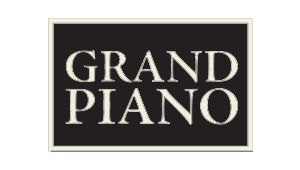
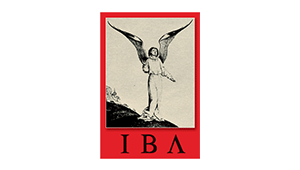



















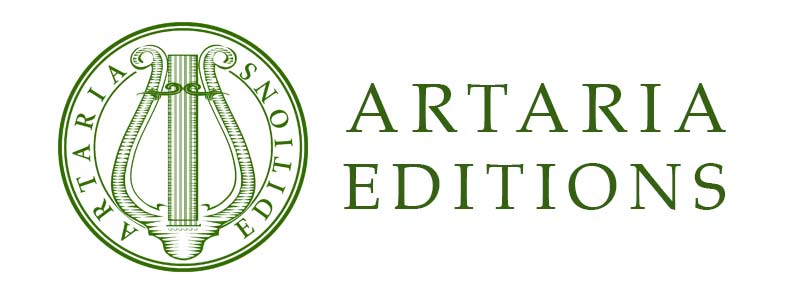



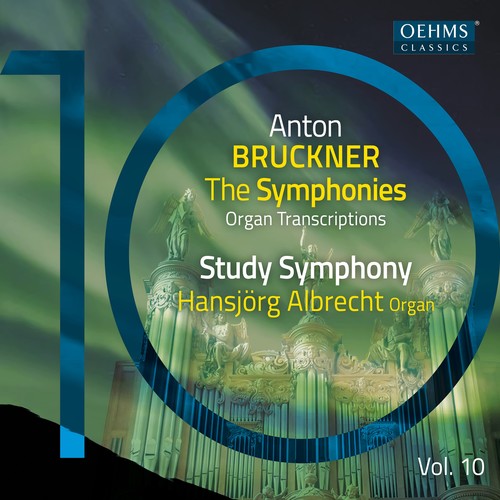
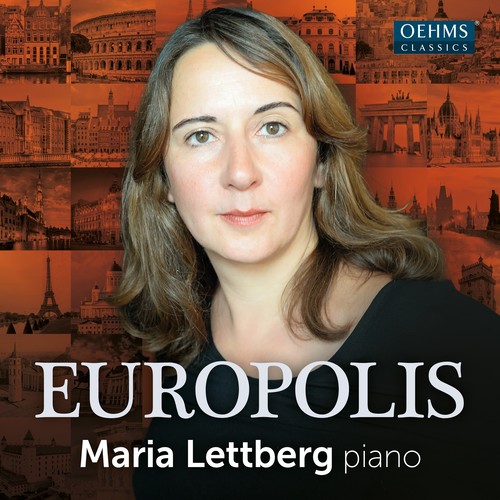
![RIHM, W.: Jakob Lenz [Opera] RIHM, W.: Jakob Lenz [Opera]](https://cdn.naxos.com/sharedfiles/images/cds/hires/OC981.jpg)
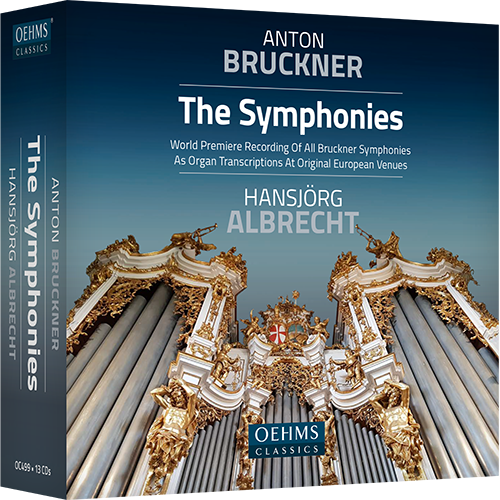
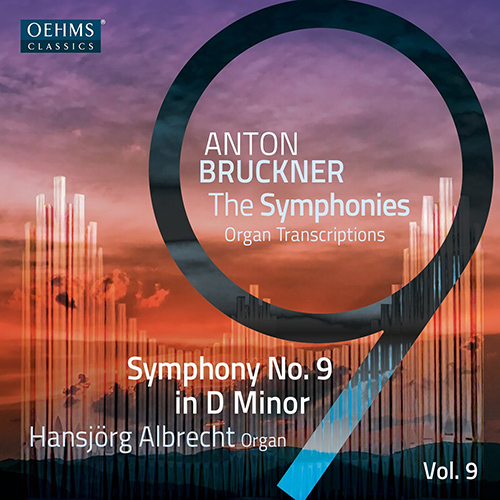
![DONIZETTI, G.: Dalinda [Opera] DONIZETTI, G.: Dalinda [Opera]](https://cdn.naxos.com/sharedfiles/images/cds/hires/OC989.jpg)
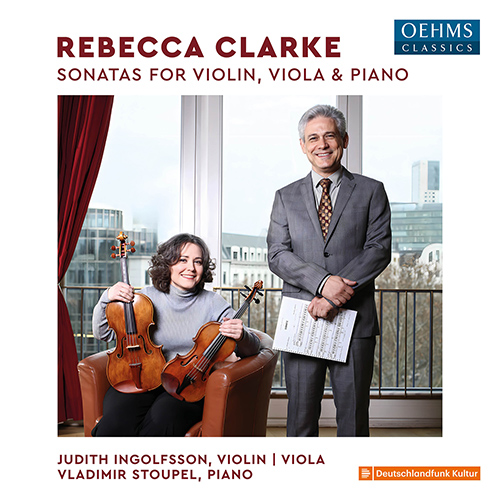

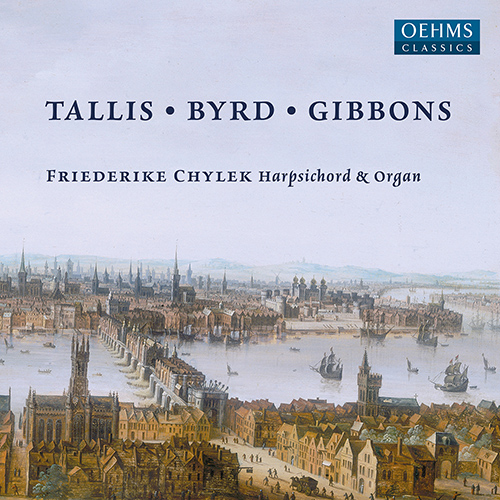
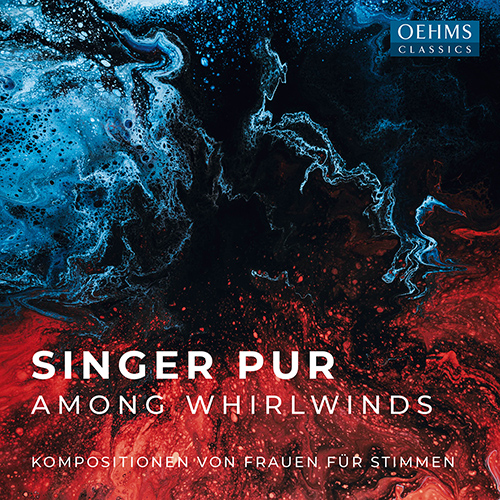
![LOEWE, C.: Jan Hus [Oratorio] LOEWE, C.: Jan Hus [Oratorio]](https://cdn.naxos.com/sharedfiles/images/cds/hires/OC1720.jpg)
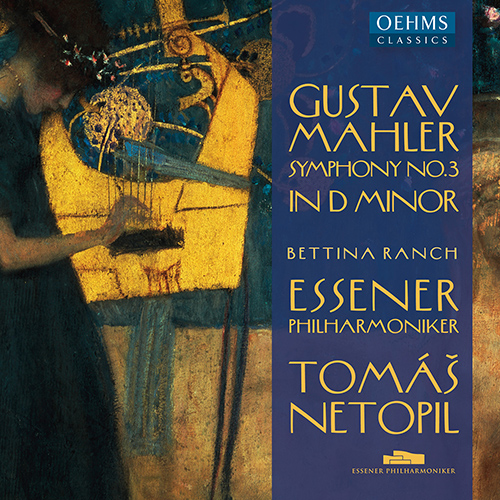
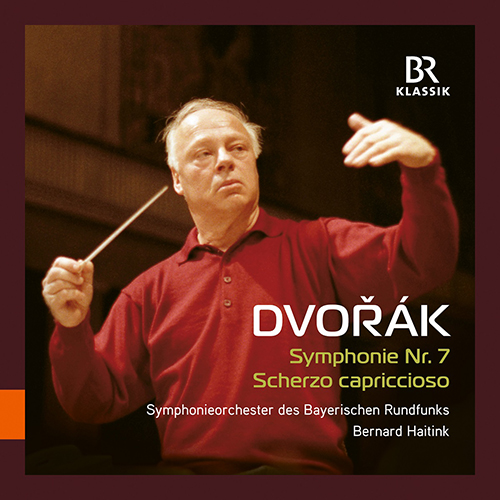
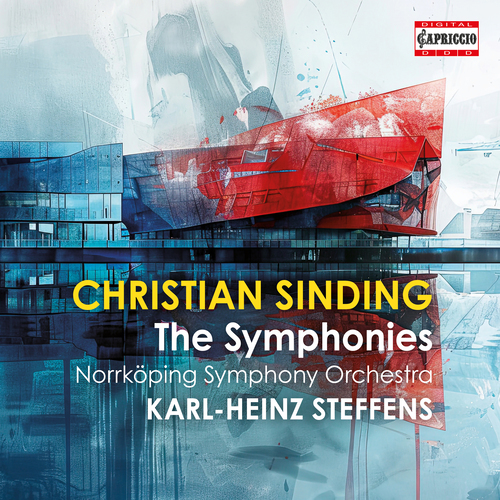
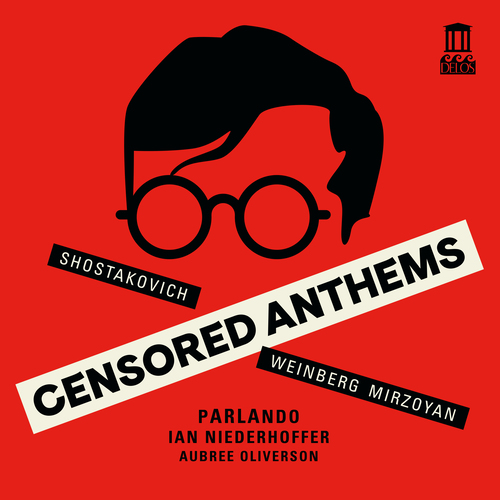
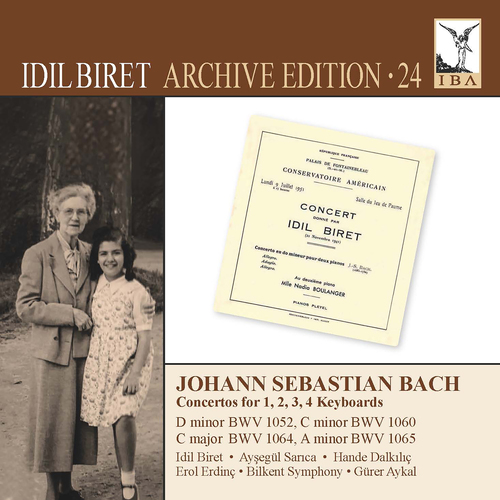

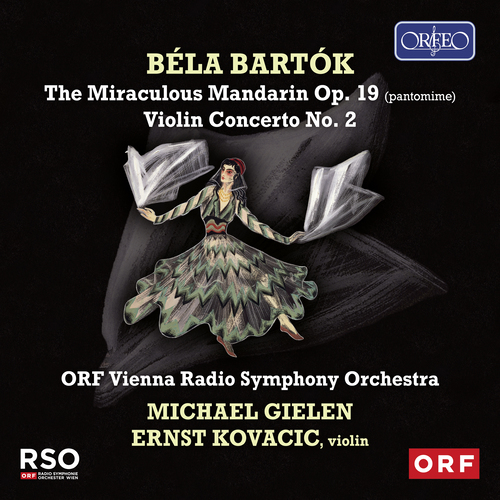

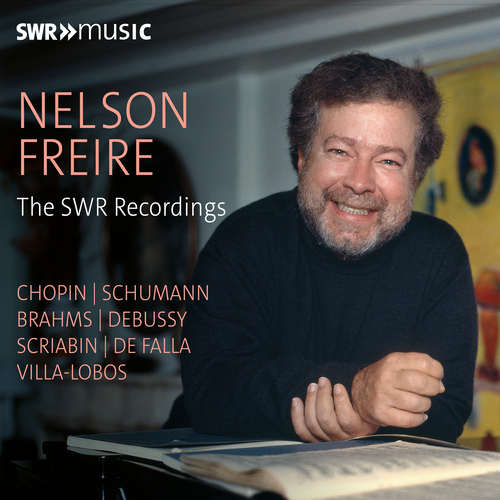

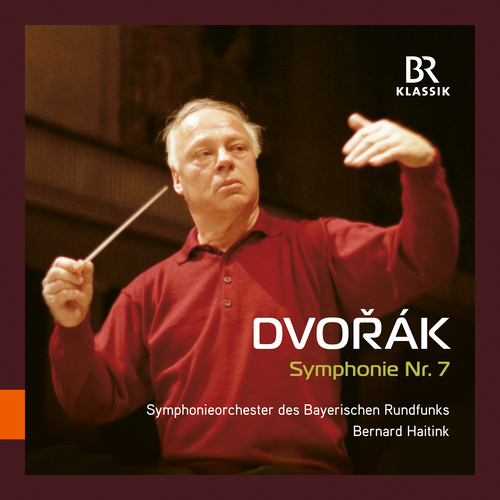
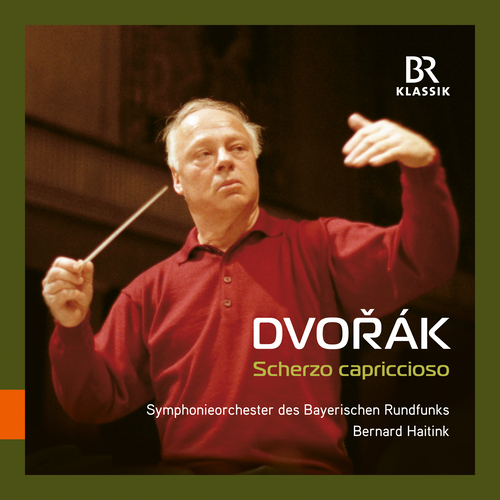
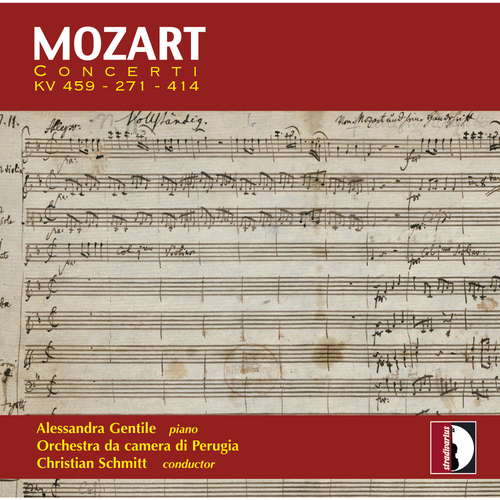
![PONCHIELLI, A.: I Lituani [Opera] PONCHIELLI, A.: I Lituani [Opera]](https://cdn.naxos.com/sharedfiles/images/cds/hires/ACC-80642.jpg)
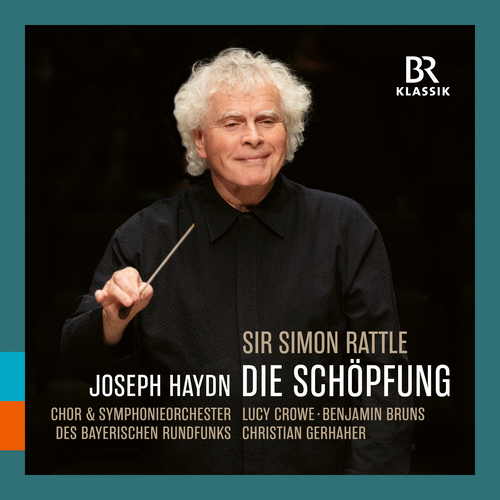
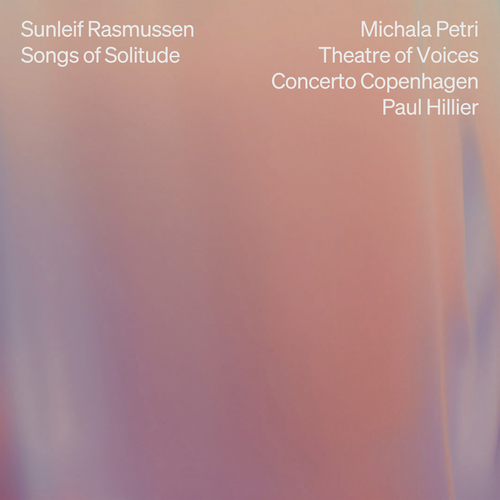
![CILEA, F.: Gloria [Opera] CILEA, F.: Gloria [Opera]](https://cdn.naxos.com/sharedfiles/images/cds/hires/8.660568.jpg)

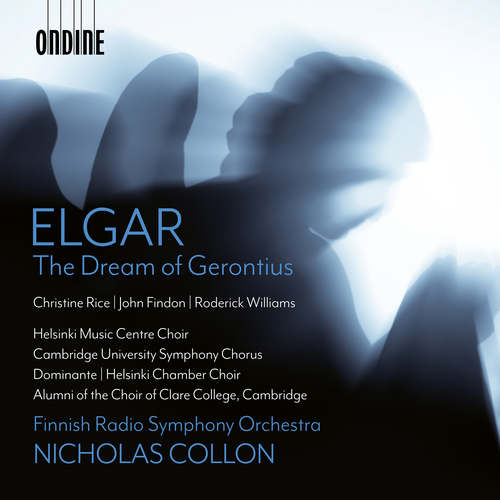
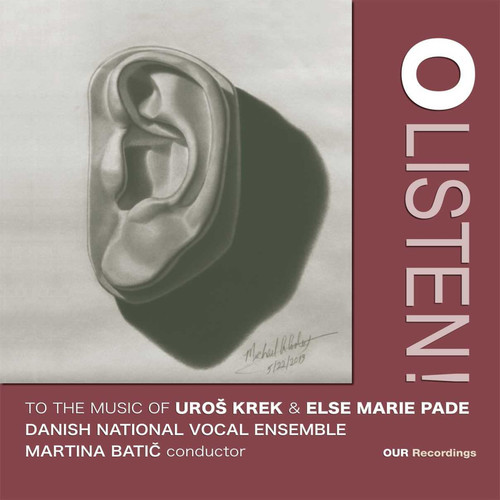
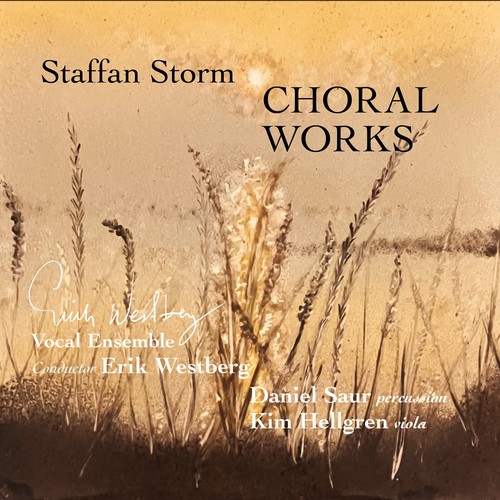
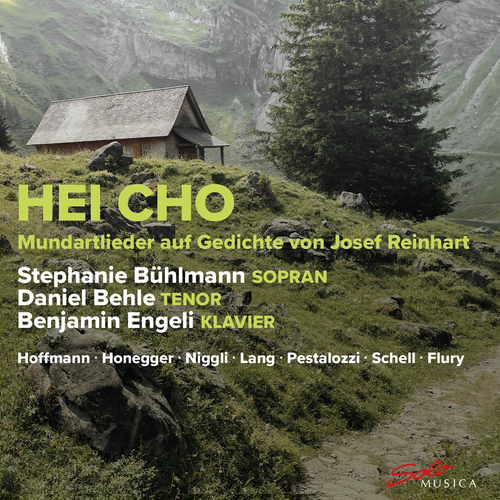
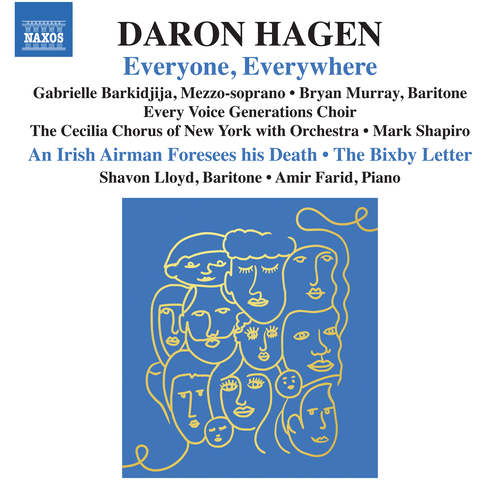
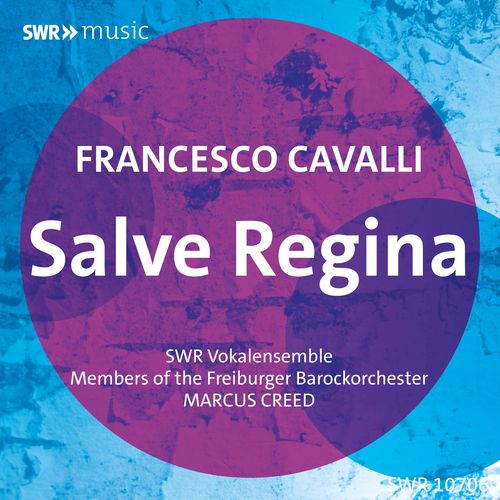
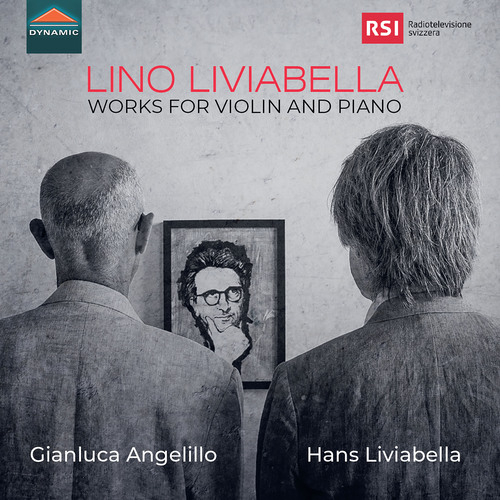
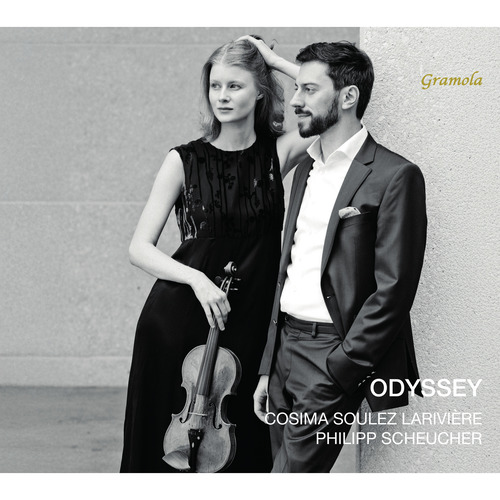
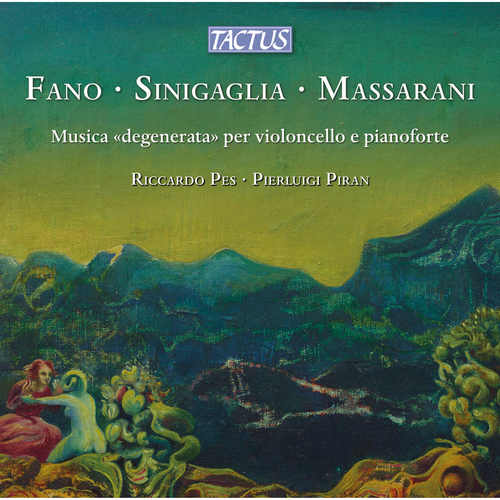
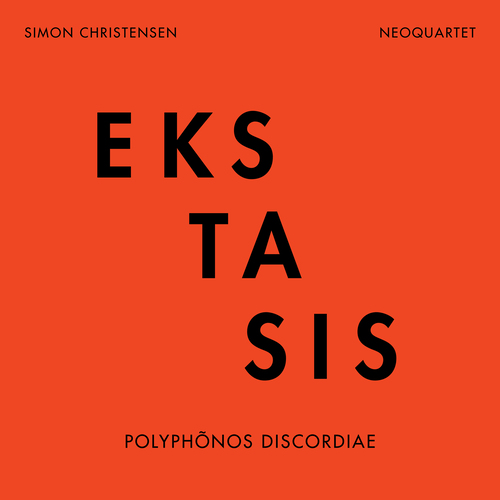

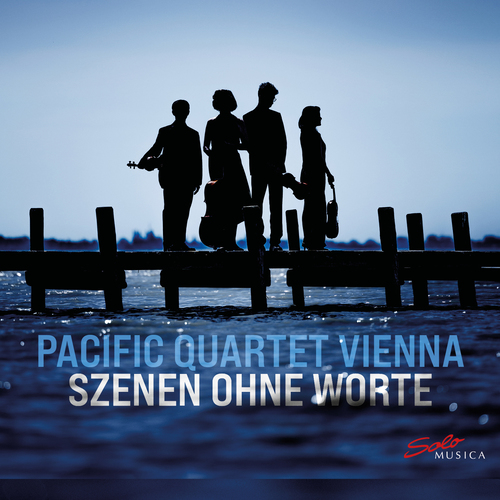

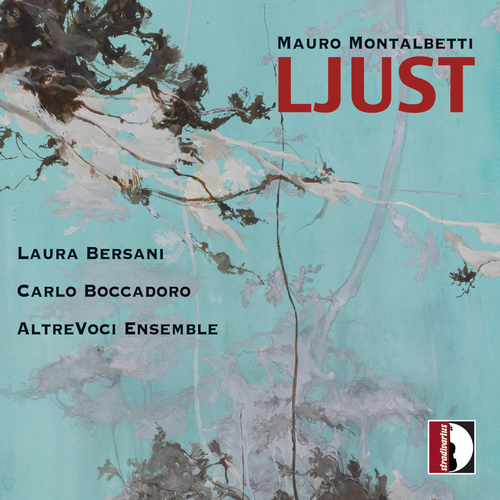
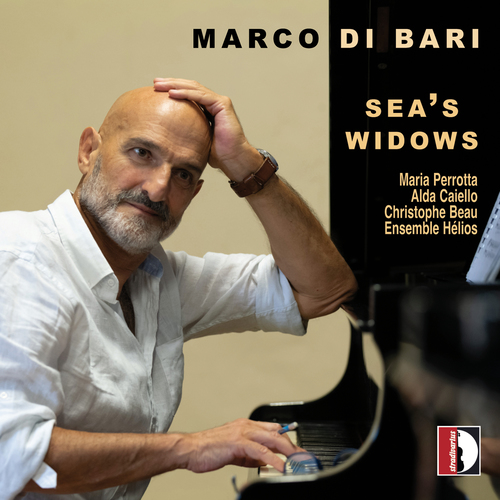
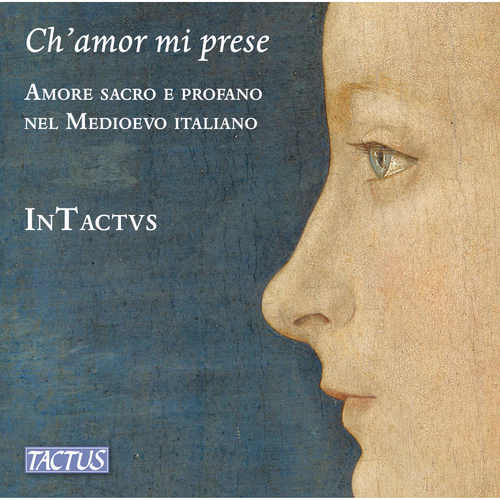
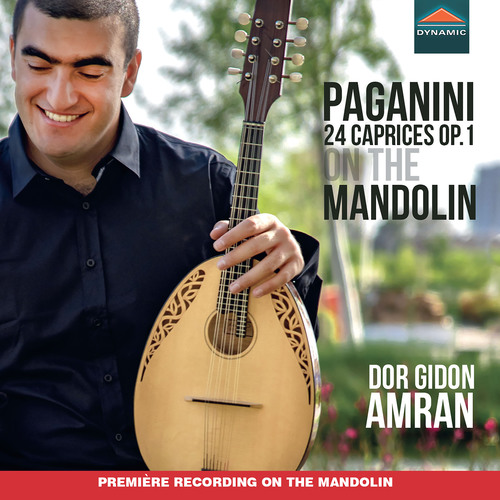

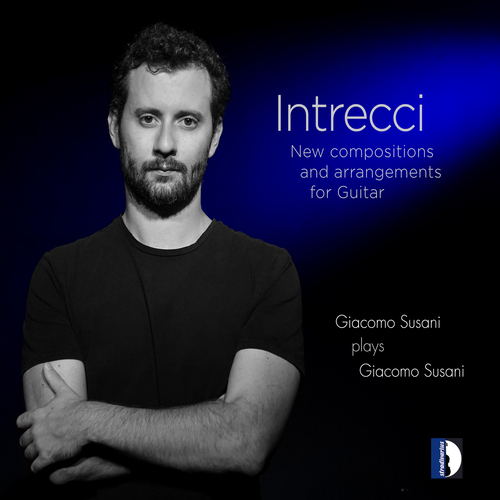


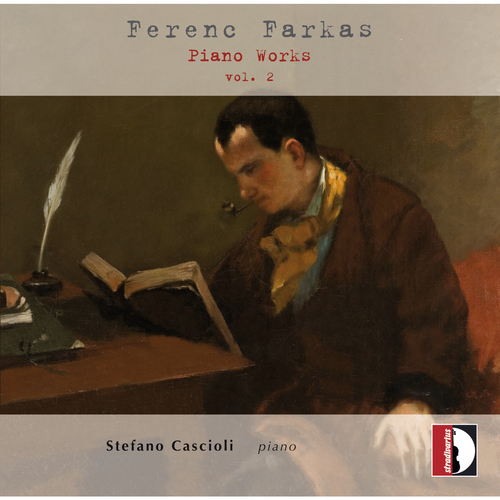
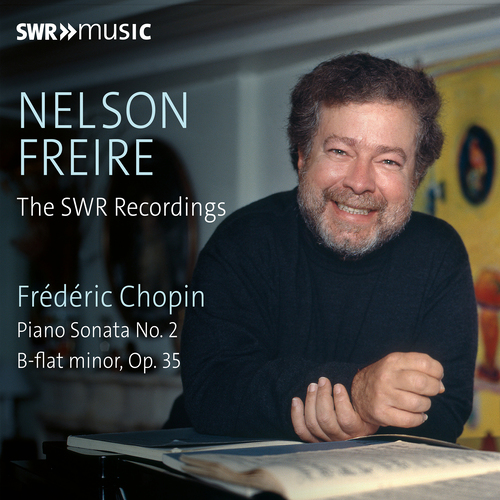
![PUCCINI, G.: Tosca [Opera] (Maggio Musicale Fiorentino, 2024) PUCCINI, G.: Tosca [Opera] (Maggio Musicale Fiorentino, 2024)](https://cdn.naxos.com/sharedfiles/images/cds/hires/DYN-38057.jpg)
![STRAUSS, R.: Arabella [Opera] (Deutsche Oper Berlin, 2023) STRAUSS, R.: Arabella [Opera] (Deutsche Oper Berlin, 2023)](https://cdn.naxos.com/sharedfiles/images/cds/hires/2.110774.jpg)
